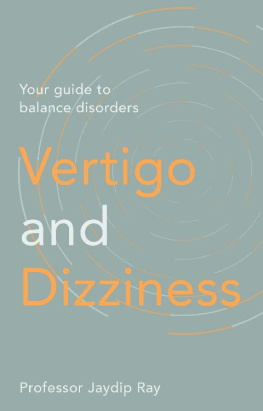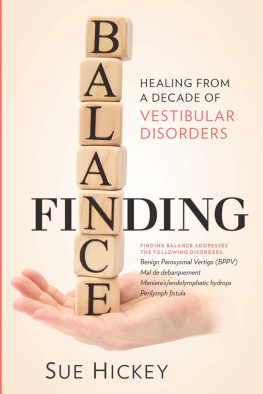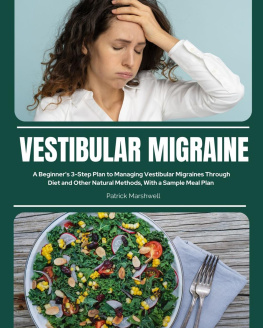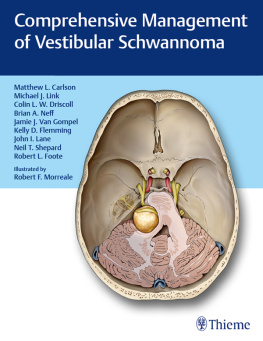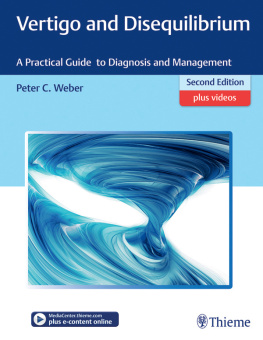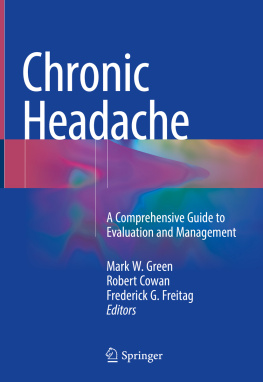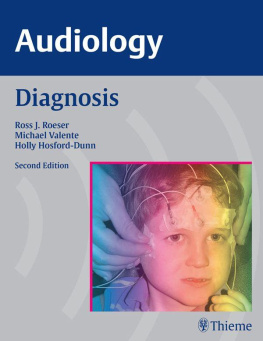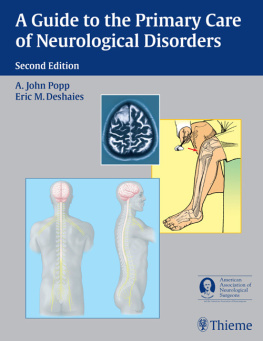DIAGNOSTIC VESTIBULAR POCKET GUIDE
Evaluation of Dizziness, Vertigo, and Imbalance
Editor-in-Chief for Audiology
Brad A. Stach, PhD
DIAGNOSTIC VESTIBULAR POCKET GUIDE
Evaluation of Dizziness, Vertigo, and Imbalance
Julie A. Honaker, PhD, CCC-A


5521 Ruffin Road
San Diego, CA 92123
e-mail:
Website: https://www.pluralpublishing.com
Copyright 2021 by Plural Publishing, Inc.
Typeset in 11/13 Garamond Book by Flanagans Publishing Service, Inc.
Printed in the United States of America by Integrated Books International
All rights, including that of translation, reserved. No part of this publication may be reproduced, stored in a retrieval system, or transmitted in any form or by any means, electronic, mechanical, recording, or otherwise, including photocopying, recording, taping, Web distribution, or information storage and retrieval systems without the prior written consent of the publisher.
For permission to use material from this text, contact us by
Telephone: (866) 758-7251
Fax: (888) 758-7255
e-mail:
Every attempt has been made to contact the copyright holders for material originally printed in another source. If any have been inadvertently overlooked, the publisher will gladly make the necessary arrangements at the first opportunity.
Disclaimer: Please note that ancillary content (such as documents, audio, and video, etc.) may not be included as published in the original print version of this book.
Library of Congress Cataloging-in-Publication Data:
Names: Honaker, Julie A., author.
Title: Diagnostic vestibular pocket guide : evaluation of dizziness, vertigo, and imbalance / Julie A. Honaker.
Description: San Diego, CA : Plural, [2021] | Includes bibliographical references and index.
Identifiers: LCCN 2020027362 | ISBN 9781635503128 (paperback) | ISBN 1635503124 (paperback)
Subjects: MESH: Dizzinessdiagnosis | Vertigodiagnosis | Handbook
Classification: LCC RB150.V4 | NLM WL 39 | DDC 616.8/41dc23
LC record available at https://lccn.loc.gov/2020027362
Contents
The goal of the Diagnostic Vestibular Pocket Guide is to provide hands-on, evidence-based material for students and clinicians in the trenches of vestibular evaluation. This quick reference evolved from experiences teaching vestibular assessment in both academic and clinical settings. The book is designed for patient care and complements core theories provided in comprehensive texts dedicated to balance assessment and management. The reader should be familiar with vestibular anatomy and physiology, along with a basic understanding of key concepts. The pocket guide is organized and condensed to encompass all facets of the clinical evaluation: appointment preparation, formulating the clinical question(s), vestibular screening measures, and appropriate objective testing. The work is innovative as specific chapters target common disorders and evaluation, modifications to vestibular evaluation for both ends of the lifespan, the vestibular care path, the framing of clinical impressions, and medical referral criteria. Well-known treatments are briefly discussed concerning appropriate usage and based on accurate diagnosis. Emphasis is placed on the availability of a portable reference (pocket) guide to carry throughout the clinical appointmentan invaluable resource for students and providers in the clinical setting.
First and foremost, I am sincerely appreciative of my students for inspiring and encouraging me to write this book. I also wish to thank my friends and colleagues for their interest and support in this venture. Thank you to Ross Papalardo and Jeffrey Mobley for their assistance with the BPPV maneuvers illustrations in . A special thanks to my dear friend Jane Gilbert, retired AuD, for her invaluable editing and suggestions. Lastly, I would like to recognize my family. Thank you to my parents for teaching me the importance of effort and perseverance. To my husband Duane and daughter Vivian, thank you for being my cheerleaders and welcome distractions when I needed it most.
Plural Publishing, Inc. and the author would like to thank the following reviewers for taking the time to provide their valuable feedback during the development process:
Rachel D. Craig, AuD, CCC-A
Assistant Professor of Audiology
University of Wisconsin
Madison, Wisconsin
Robin Criter, AuD, PhD
Western Michigan University
Kalamazoo, Michigan
Steven M. Doettl, AuD
University of Tennessee Health Science Center
Memphis, Tennessee
Lilian Felipe
Post-Doctoral in Otoneurology and PhD in Health Sciences
Professor
Lamar University
Beaumont, Texas
Patricia Gaffney, AuD
Professor
Department of Audiology
Nova Southeastern University
Fort Lauderdale, Florida
Barbara Grossman, AuD
Clinical Audiologist
New York City Private Practice
Troy D. Hale, AuD
Assistant Professor
A.T. Still University
Audiologist
Barrow Neurological Institute/St. Josephs Hospital
Mesa, Arizona
Lauren L. Pasquesi, AuD
Senior Audiologist/Lead Vestibular Audiologist
University of California San Francisco Medical Center
Adjunct Faculty
University of the Pacific
San Francisco, California
SENSORY MODALITIES OF BALANCE CONTROL
The balance system coordinates compensatory eye, head, and body movements allowing for clear vision with head and body activities, perception of movement and direction, and postural control. The three primary systems that contribute to balance control include vestibular, visual, and somatosensory.
The vestibular system is an internal sensory reference that provides cues of space perception and both direction and velocity of movement. A central role of this system is to stabilize retinal images during head movements.
The visual system is an external sensory reference that indicates environmental movement and position.
The somatosensory system is also an external sensory reference, including both proprioception and kinesthetics that detect changes in the support surface.
ANATOMY AND PHYSIOLOGY OF THE VESTIBULAR SYSTEM
Located within the petrous portion of the temporal bone, two labyrinths (bony and membranous) comprises the vestibule, semicircular canals, and cochlea (Baloh & Honrubia, 2001). The bony labyrinth is a hollow chamber that houses the sensory organs for hearing (anterior part) and balance (posterior part). Perilymph fluid fills the space.
The membranous labyrinths (right and left) contain the cochlea and five vestibular organs: the utricle and saccule (otolith organs), and the three semicircular canals (horizontal, anterior/superior, and posterior; ). The vestibular organs contain receptors responsible for sensing both linear (otolith organs) and angular (semicircular canals) acceleration and deceleration. The membranous labyrinth is suspended within the bony labyrinth but is adhered to ligaments, so only the fluid within the membranous labyrinth moves with head and body movements. Endolymph fluid fills the membranous labyrinth. The membranous labyrinth also contains the endolymphatic duct and sac.


